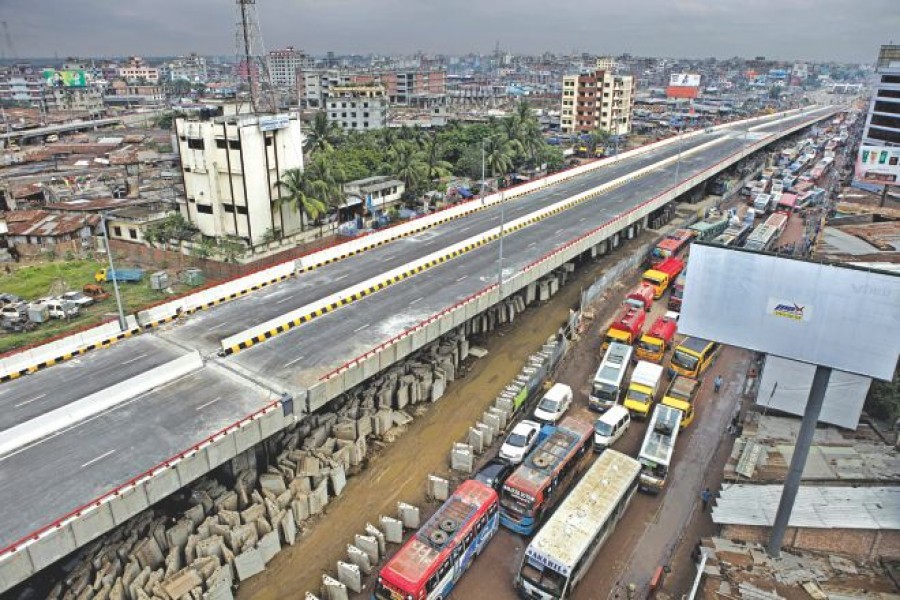
Published :
Updated :

It is disconcerting to note that the Mayor Mohammad Hanif Flyover that links city's Gulistan with Jatrabari, as reported in this paper recently, is failing to serve the objective for which it was constructed. The 11.7-kilometre-long flyover is thus likely to be yet another addition to the long-list of failed projects, unless appropriate measures are taken by the relevant authorities. The history of the flyover project, constructed by a private party under build-own-operate-and-transfer (BOOT) basis, has not at all been palatable. The project, initiated in 1998, witnessed hike in costs and extending of its construction time on a number of occasions before it was partially opened to vehicular movement in 2013. It is unacceptable to both commuters and transport owners that the flyover has been failing to rid them of chronic traffic tailbacks on the Gulistan-Jatrabari route for reasons beyond their control.
The whimsical fixation of toll rates by the private operator concerned has allegedly been responsible for not making use of the flyover's facility by short-distance passenger buses, trucks and other heavy vehicles. These vehicles reportedly prefer to use dilapidated and narrowed-down roads running along both sides of the flyover. This leads to severe traffic jams during peak hours. The problem surfaced when the private operator of the flyover raised the toll rates, ranging between 70 and 100 per cent, in violation of its agreement with the Dhaka South City Corporation (DSCC), its ultimate owner. The DSCC, as reported, sent a number of letters to the operator asking the latter to reduce the toll rates. The operator, instead of lowering rates, has taken recourse to legal action.
The worst sufferers of the severe traffic jam along the Gulistan-Jatrabari route are the users and operators of passenger buses. The short-distance bus owners say they cannot afford the rates levied by the flyover builder. That is why they had put forward a proposal to pay an affordable toll on daily basis, instead of every single trip. But, much to their dismay, the builder declined to accept their proposal. The builder may have some reasons for sticking to its decision of fixing toll rates more than the ones agreed with the DSCC, for lower traffic flow does also affect its own financial interests.
Obviously, substantial hike in the cost of construction of the flyover might have made the agreed toll rates unfeasible for the builder. But it would have been proper to discuss the issue with the DSCC and find a solution to its problem without going for any unilateral hike of toll rates. The flyover operator does need to understand the fact that with the current level of traffic flow it would not be possible on its part to recover the cost of construction, meet its financial obligations and earn profit within the contract period. So, finding a suitable way to beef up the traffic flow is also essential for protecting its own interest. If the flyover operator succeeds in settling the stalemate over toll rates, all parties, including the passengers and transport owners, will be benefited. And with it the entire economy will start receiving appropriate dividend from an otherwise viable development project.


 For all latest news, follow The Financial Express Google News channel.
For all latest news, follow The Financial Express Google News channel.